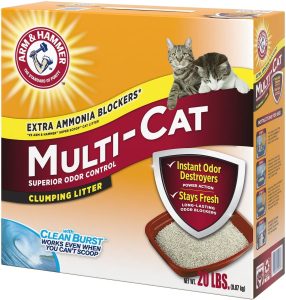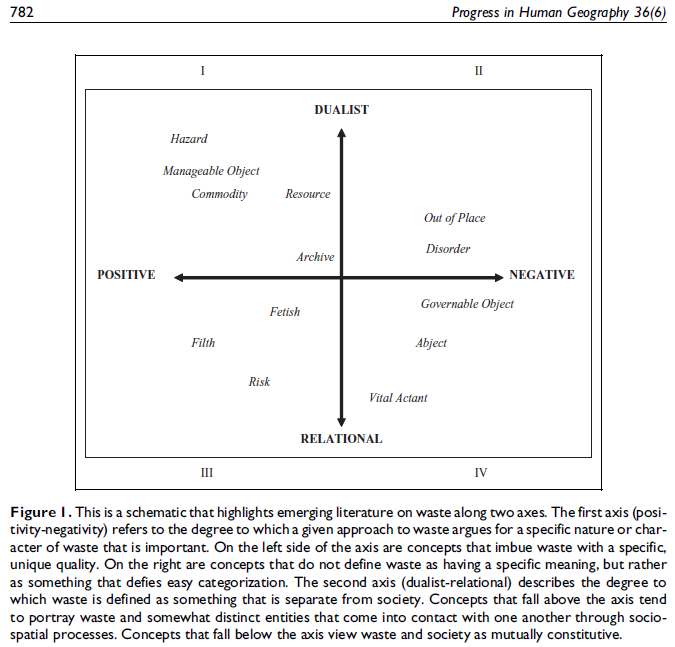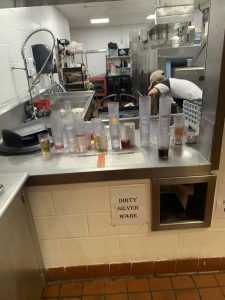Living with diabetes, I constantly rely on a substantial number of syringes and insulin pump quicksets. These crucial medical tools are often discarded as waste due to their contamination. Mary Douglas’s concept of dirt provides an insightful perspective on why these items are categorized as waste. She proposes that dirt is more than just physical impurity; it symbolizes something that deviates from established societal norms. In the case of these medical supplies, they are deemed impure due to their close association with bodily fluids and medical procedures. They come into direct contact with open wounds and are used to penetrate the skin, raising legitimate concerns about infection risks. From a public health perspective, it becomes evident why these items are labeled as “dirty.” They disrupt the pursuit of cleanliness and health within our environment, underscoring the need for their proper disposal to safeguard public health. From an environmental standpoint, these disposable items also contribute to resource wastage and environmental pollution, further justifying their categorization as waste. The entire lifecycle of these items, from production to disposal, involves substantial environmental impacts. This broader perspective emphasizes the environmental consequences of labeling these items as waste, extending beyond their role in disease prevention. In conclusion, Mary Douglas’s concept of dirt provides a comprehensive framework for understanding why these vital medical supplies are considered waste. It underscores how societal norms, public health considerations, and environmental consequences all contribute to the perception of these items as waste in our daily lives
The place that I chose is the common room in my hall. The common room is a very social space in my hall and is used by everyone and their guests. In the common room is also where the main trash and recycling bins are. While the waste bins are not the main focus of the room, thinking about this prompt, I have noticed that the room is set up around the bins. There are two larger chairs and a couch in the common room, the set up of the furniture is mostly centered around the corner of the room by the windows. I have noticed that the setup of the room right now is as far as it can be from the trash. The use of the room is either for social activities or to use the trash. The flow of the room is affected by the placement of the waste bins in the room. There is also the aspect of distance from the bins, the room is set up so that the social circle of the room is facing away from the bins. This is interesting to me because this is not something that I would usually think about when I am sitting in a space. With topics like this from class, it is now hard to not notice how we unconsciously set up our spaces around waste.
Shit
A topic that stuck out in my head was the distance at which we are removed from our own waste. Just to be clear, I’m not saying people should like to be around their own shit! The natural avoidance of humans to materials that can make us sick is completely understandable, but the treatment of human waste in society suggests that humans seek to distance themselves from the thought of it entirely. A few differing explanations of this cover some aspects of this phenomenon.
One example is advertising. The other day, while changing my cat’s litter, I noticed that the litter box didn’t actually say what it is for:

A box of cat litter similar to the one I was reading
If I had somehow come from an environment where I knew nothing about cats and their bathroom habits, I would have no idea what use this product serves. It advertises its “superior odor control” and its ability to stay fresh “even when you can’t scoop”. This is strange in contrast to something like shampoo, which still has instructions!

Not that these instructions are very helpful…
My mind is also drawn to toilet paper commercials, where characters will dance around on clouds and mention how incredibly soft the new inch-thick toilet paper is, but the most they will say about its function is “enjoy the go!”
Overall, our culture has a strange relationship with a good number of the natural processes our bodies experience… shit is just one of them!
Distancing infrastructures
The place I chose on campus was the Hitchcock Center for the Environment. According to the Hitchcock website it is the 23rd living building in the world and 4th in Massachusetts. Now many of us probably know what a living building is as we have one directly in the middle of our campus, but it is a self sufficient building. It creates its own water, energy and light among many other things. I could keep talking about that part but that is not my main focus. The building is just the surface level, the spark needed for a conversation. What’s so great about that being this building is that it is a nature center that has classes for kids from a wide range of ages. Now the classes that I worked with were always of the younger age (6-7 year olds usually) and part of the afterschool program so a curriculum was not something we had. Instead they were more or less set free in the outdoor areas or we went on walks around campus. With the help of the living building and the use of mainly recycled materials used for crafts there is a constant conversation of the planet and waste. Something that I find adults often struggle to discuss openly. Instead Hitchcock Center created a safe space for all ages to have that conversation. It’s not judged or hidden but in your face and openly discussed.
Conceptualizing Waste
The waste object I am going to examine is paper. I will be taking this object and applying it to the following three categories of waste that Moore identifies: archive, matter out of place, and resource. For starters, I frequently view paper as being archival material. I scrapbook often and all of the contents included are paper. Some examples include concert tickets or birthday cards. However, I do sometimes scrapbook with paper materials that would be considered waste. Some of these examples include straw wrappers from dinner with friends or streamers from holiday celebrations. It is thought-provoking to see how with concert tickets, there is more of an expectation for hanging onto them. But, with straw wrappers, even friends who have been present more than once when I take them home still ask questions about why I do it. My experience with this comes from a desire to create sentimentality around things that wouldn’t always be the first things chosen to do so. Now moving into paper being matter out of place. Once in elementary school, we did this lesson on recycling that involved each student being given a sheet of paper to crumple up. Some had words on them while others were plain. Once they were all crumpled, everyone threw their paper ball into a box to be mixed around. Then, we went around the room choosing a paper ball from the box. You had to decide whether or not you were going to throw away your ball. Everyone threw away their balls solely because they were crumpled up. I think it is interesting that whether or not the paper was crumpled superseded whether or not there were words already written on it. In the end, the whole idea was about not making assumptions and seeing how we could use paper in multiple ways. Now going into seeing paper as a resource. Even with paper being a commonly used resource for a plethora of things, I feel we as a society don’t reuse paper enough. I have recently started to cut up my paper scraps and color them to make confetti for decoration in my room. In conclusion, this reading allowed me to think about more waste categories and how they can be applied to a specific material and my thinking around what is waste.
Conceptualizing Waste – prompt
In the reading this week, Moore maps out several different ways of conceptualizing waste, many of which we have already tacitly been using. Choose a waste object, and use at least three of her conceptualizations of waste to explain how this waste object can be understood differently from these perspectives. Does one of these conceptualization seem to make more sense for understanding why your object is considered to be waste? This can be a waste object you’ve already written about, or something new.

A four quadrant plot of different conceptualizations of waste from Moore 2012
Readings from this week:
Moore, S. A. “Garbage Matters: Concepts in New Geographies of Waste.” Progress in Human Geography 36, no. 6 (December 1, 2012): 780–99. https://doi.org/10.1177/0309132512437077.
Distancing Infrastructures (restaurants)
A place I saw that had Distancing Infrastructure was a sort of local restaurant called bubs Barbecue, A traditional BBQ place from 1979 and still had Trinkets and news clippings from that time. What showed the Distancing Infrastructure was the Trash being towards the side exit and is only noticable when you are leaving from the Side entrance/exit. The design of this is intentional as it is far away from the tables and farthest away from the food being served, This design is shared by many restaurants and is similar how the Bathrooms are treated as well. Most of this is designed this way for fear of contamination as I trained in culinary school in Cambridge and learned all about it. The Distancing Isolates the waste product towards the exit for easy disposability whether at the back, front or side entrance/exit. Distancing also effects contaminated products like food that has touched a floor or fallen off a chopping board. Contamination drives most of the way waste is treated in restaurants because if they don’t the restaurant could be shut down.
Distancing Infrastructures
A place around campus that I feel as if it hold a foundation of waste is the Kern. With the Kern being a zero emission building there is a very interesting aspect of the understanding of the grounds. Last year while taking a tour of the kern building I learned about the different aspects of the building that make it so special and unique. The composting toilets are a very special part of the building. I feel as if it gives the building a very cool personality. There is character in it. I personally feel like the waste that humans make comes in so many forms that we exclude liking most of them when it comes to social norms. The composting toilets go through cycles of getting cleans and turned to compost and the grey water from the building gets filtered many times. That grey water once filtered got back into watering the plants in and around the Kern building. The kern holds many impressive fleats of engineering that makes it such a cool space to be in and around. Its a great place on campus.
Distancing Infrastructure
Inside the Airport Lounge, there is a trash bin and a recycling bin right by the door that leads you to The Bridge. I feel the trash’s positioning is connected to the idea of waste distancing. The placement of it by a door is common in most places (ex. classrooms). Harkening back to the first day of this course, where a pile of trash was in the center of the room, some more thoughts are coming to mind. While we discussed that seeing trash out in the open brought up many feelings, another thing to consider is how we weren’t seeing trash in its “proper place” within the classroom space, say being by the door. The arrangement of trash by a door allows for people to throw things away as they leave a space, a literal way of leaving the waste behind, and not taking it into another. But, once again this theme of disconnection and distancing. Something I find funny is that practically every time I am in the Airport Lounge, I hear someone ask where the trash is. This makes me wonder if a more centralized location would be beneficial in any way. Overall, this week’s readings and discussions made me think about how frequently the idea of distance is associated with waste, and whether there are ways to challenge this, while still offering convenient waste sites.
Distancing Infrastructures (Dining Commons)
I think the dining commons are a good example of a place on campus where waste is ushered out of site and concealed. The work of both the cooks and the dishwashers is hidden from view, and the experience of the students eating there is that they get their plate of food, and then drop their plate off with all the others when they leave. I know from experience working in restaurants that a lot of food ends up getting thrown out before it is even served. If, at the end of the meal, some food was left unserved, they may not serve it at another meal but instead throw it out. I don’t know if this happens at Hampshire (because it is usually done discreetly), but I assume that it might. In my experiences working in food service, uneaten food would be stored in a walk in fridge for a couple of days, and, after a certain amount of time passes, would be thrown in the trash, which is taken to the dumpster at the end of the night. This process is not visible to anyone but the food service workers, and is not openly talked about because of the negative associations with wasted food. Also, the food waste and messes left by students after they have eaten are the responsibility of the dishwashers, who do their work in a private room out of view of the students who are eating there. We don’t have to think about the nastiness of their job or make an effort to streamline their process by cleaning our plates as best we can ourselves, or even, in some cases, categorizing our eating utensils when we drop them off to be washed. The extent of the wasted food is unknown to students (myself included), because it is disposed of discreetly and picked up by waste workers later on.
